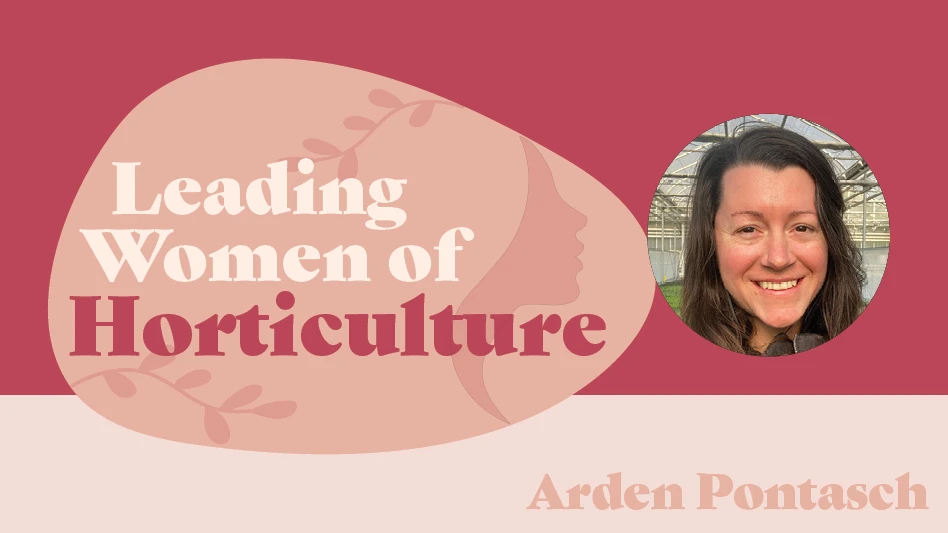

Over 15 years ago, I planted my first Amur maackia (Maackia amurensis) at Rotary Botanical Gardens in Janesville, Wisconsin, simply because it was new to me. Over years of observation and appreciation, I realized this tree was not only tough and durable but quite striking in the landscape for many reasons. This specimen was placed in a brutal location with poor soils and no supplemental irrigation or watering (ever). It not only survived; it thrived. The broad range of hardiness (USDA Hardiness Zones 3-7) coupled with an impressive adaptability to a wide range of soils makes this smaller tree worthy of more weighty consideration and focused inclusion in our landscapes.

Native to the Amur River region, which includes portions of Russia and eastern Asia (Manchuria to Korea), this member of the Fabaceae (legume) family will typically reach a height of 20-30 feet with a similar width on a clean, attractive, rounded form. In the wild, specimens over 40 feet tall have been observed, although the growth rate of this species is consistently described as slow. This tree is a close relative of yellowwood (Cladrastis sp.) and has been called Asiatic yellowwood as well. Other related trees in this family include redbud (Cercis), black locust (Robinia) and honey locust (Gleditsia). The genus Maackia is named after Russian naturalist and explorer, Karlovich (Richard) Maack (1825-1886). The specific epithet comes from the region in which it is found. Maackia amurensis was introduced into cultivation in 1864. There are 12 species of Maackia distributed throughout Eastern Asia with six species endemic to China. The dark colored wood of Amur maackia is quite hard and rot resistant and has long use in fencing material, tool handles and utensils in its native region and beyond.
Like other plants in the Fabaceae family, Amur maackia can fix atmospheric nitrogen through a symbiosis with root bacteria called rhizobia. This species is tolerant of drought and both acidic and alkaline soils. Tolerating periodically wet soils, this tree is not ideally suited for poorly drained soil or prolonged standing water. While preferring full sun, Amur maackia can also tolerate part shade and has no serious insect or disease problems. The species is becoming more popular as a street tree due to its ability to tolerate dry, poor soils and harsh cold. The slow growth rate coupled with medium height at maturity are factors that may be favorable in select urban situations. Excessive exposure to salt should also be avoided, although specimens used along streets seem to accept average salting effects in the winter with little impact or difficulty.
_fmt.png)
The leaves of this plant emerge in early spring with a silver-green appearance due to the fuzzy underside of the odd-pinnately, compound leaves (7-11 elliptical leaflets), which are seen as they unfold. These young, silvery, downy leaves are quite noticeable and ornamental. As the foliage fills out, the leaves then take on a dusky, olive-green summer appearance which contributes to the medium-fine texture of the tree. Fall color is non-existent to minimal. Significant white flowers with a faint blue tinge appear in late June and early July and last for a couple weeks before fading to brown. These erect, spike-like flowers (panicled racemes) are quite showy and slightly fragrant. The fragrance is described as freshly mown grass or alfalfa. The fruiting structure is a flat pod similar to what is observed on a redbud. What I grew to appreciate about this small tree in time was the increasingly beautiful, coppery bronze bark. Exfoliating with age into loose flakes and curls, the primary trunk initially gets interesting “diamond” patterns and the glossiness of both trunk and larger branches is conspicuous throughout the season. The contribution of ornamental bark only increases with age and is most conspicuous in the dormant season.
_fmt.png)
Propagated by seed (research the soaking and scarification requirements) or softwood cuttings, this tree is not quick to establish but once settled in the landscape, is a reliable grower. Two selections, aside from the straight species, are available out in the trade and both are also promoted as extremely hardy to Zone 3. From J. Frank Schmidt & Son Co. comes the MaacNificent maackia (Maackia amurensis ‘JFS-Schichtel1’) which is touted as the most vigorous selection they’ve seen. This selection is a bit more upright and vase-shaped in habit with a mature height of 30 feet and width of 22 feet. The University of Minnesota introduced the Summertime maackia (Maackia amurensis ‘Summertime’) as a more compact and rounded form reaching 18-20 feet tall at maturity with a width of 12-15 feet. Occasionally available, although still quite uncommon in cultivation, is M. amurensis var. buergeri from Manchuria, which is thought to have an increased hardiness although with features consistent to that of the straight species.
The list of extremely hardy, “tough-as-nails” trees with few problems and wide adaptability is quite short. Amur maackia should be on this short list as the combination of toughness and beauty of this tree, coupled with exciting potential for use in our urban areas, makes this a selection to know and grow.
Mark Dwyer was the Director of Horticulture at Rotary Botanical Gardens in Janesville, Wisconsin, for 21 years. He has degrees in landscape architecture and urban forestry and now operates a private consulting practice, Landscape Prescriptions by MD. www.landscapeprescriptionsmd.com
 | The Garden Center Conference & Expo, presented by Garden Center magazine, is the leading event where garden retailers come together to learn from each other, get inspired and move the industry forward. Be sure to register by April 17 to get the lowest rates for the 2025 show in Kansas City, Missouri, Aug. 5-7.
|

Explore the January 2020 Issue
Check out more from this issue and find your next story to read.
Latest from Nursery Management
- The Growth Industry Episode 3: Across the Pond with Neville Stein
- Trends: Proven Winners 2025 perennial survey shows strong demand
- Online registration opens for the 2025 Farwest Show
- Sustainabloom launches Wholesale Nickel Program to support floriculture sustainability
- Plant breeding as an art
- Society of American Florists accepting entries for 2025 Marketer of the Year Contest
- American Horticultural Society welcomes five new board members
- Get to know Christopher Brown Jr. of Lancaster Farms







